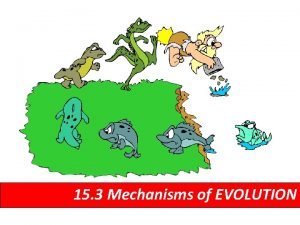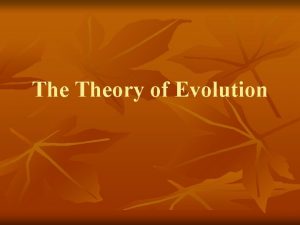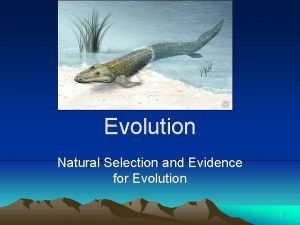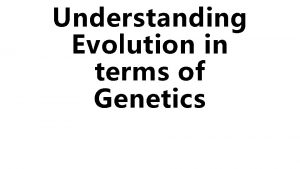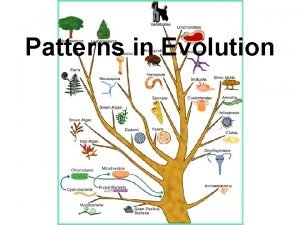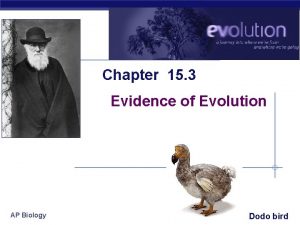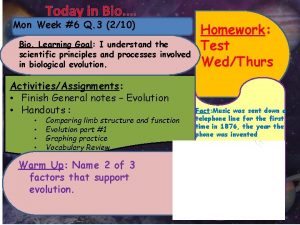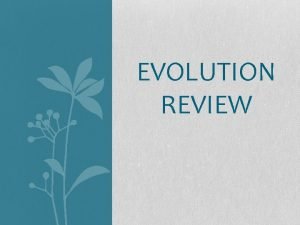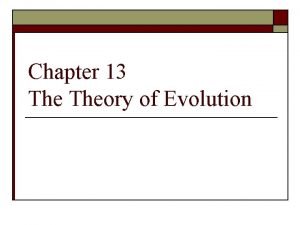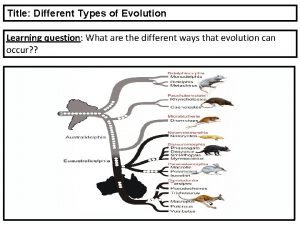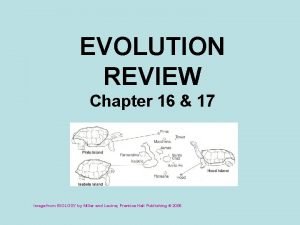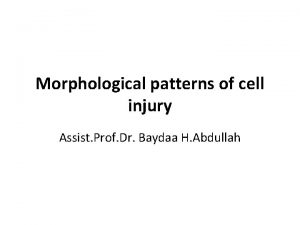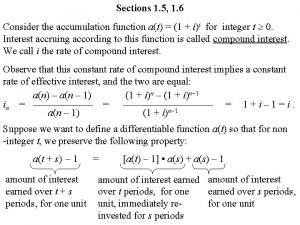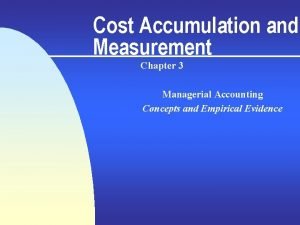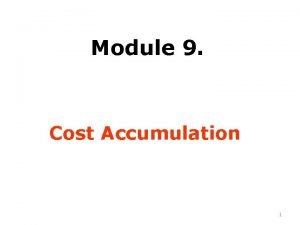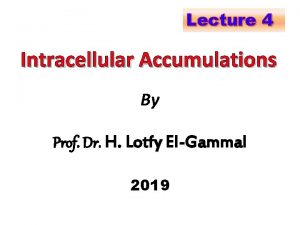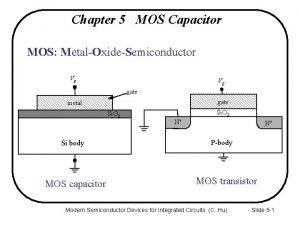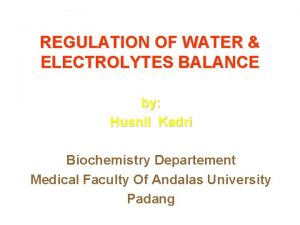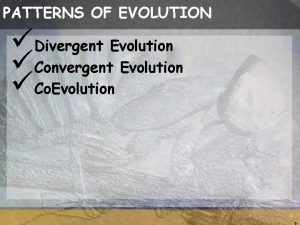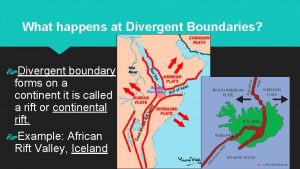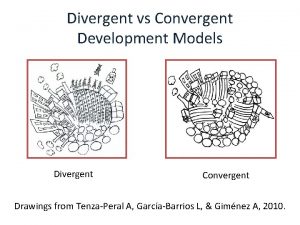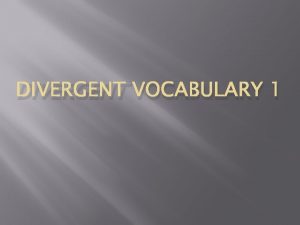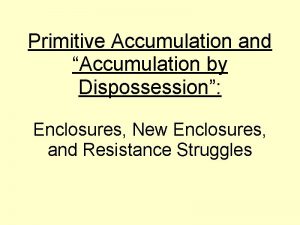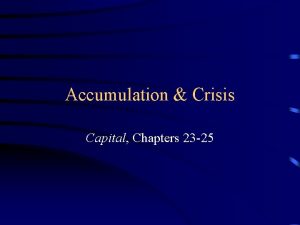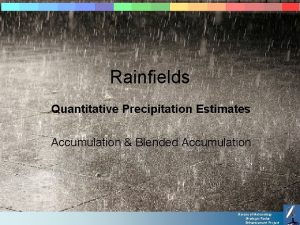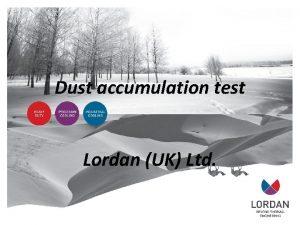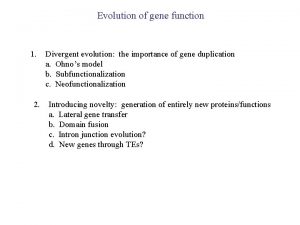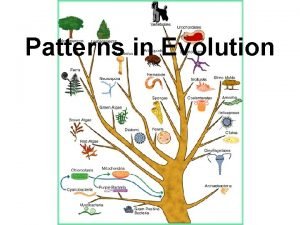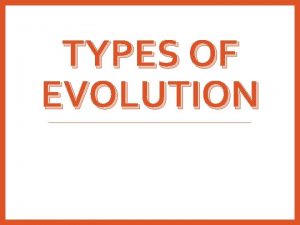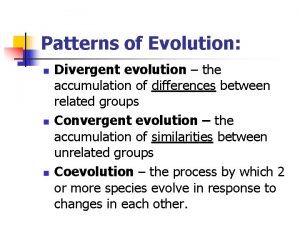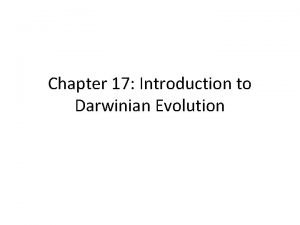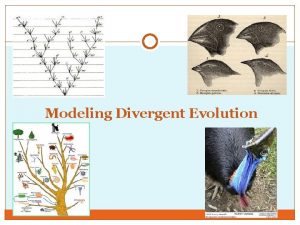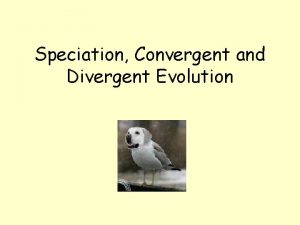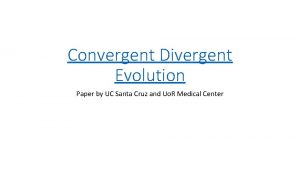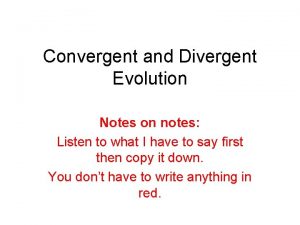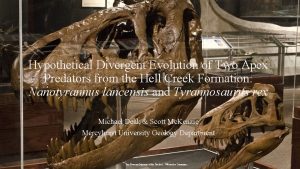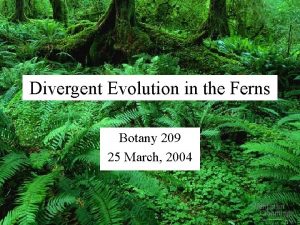Divergent Evolution Divergent evolution is the accumulation of





























- Slides: 29

Divergent Evolution Divergent evolution is the accumulation of differences that can lead to speciation.

Homologous structures: similarities in structures due to common ancestry.

Examples of Homologous Structures

Vestigial structure: A structure that is reduced in function or structure, but may have had function in ancestor. Examples: Appendix Tonsils Ostrich wings


Star Nosed Mole: Reduced sense of vision.

Convergent evolution: Distantly related species evolve similar adaptations, because they occupy similar niches, have similar natural selection pressure. Example: Anteater and aardvark

In convergent evolution, trait is not shared by more closely related species. The trait evolved independently in more distantly related species because the of similarities in natural selection pressure.

Analogous structures: similarities in structure on more distantly related species, due to convergent evolution. Example: wings of butterflies and bats

Applying the Concepts Snakes have skeletal remnants of legs. What term describes this type of structure? Vestigial structure

Applying the Concepts Whales and other sea mammals have a similar shape to fish, even though they are more closely related to land mammals. What type of evolution is this an example of? Convergent evolution What term describes the relationship between fish and whale fins? Analogous structures

Applying the Concepts The teeth of beavers and the tusks of elephant stem from a common ancestor, but they are adapted for different functions. What is this an example of? Homologous Structures

Coevolution A process in which two (or more) species reciprocally affect each others evolution. Changes in the gene pool of one population resulting changes in the gene pool of the other species.

Coevolution can be a positive interaction, resulting in a highly mutualistic relationship. Example: Specialist pollinators that only pollinate one type of flower. Advantage to pollinator- no competition for food source. Advantage to plant- do not need to produce as much pollen


Coevolution can be an adaptation to a negative effect of another species. “An evolutionary arms race” Example: Increasing levels of toxins in one species to avoid predation, with the predator developing increasing tolerance to the toxin.

Fossils

Relative Dating: Age is determined in comparison to another event. Law of Superposition: For sedimentary rock layers, if undisturbed the youngest layers will be on the top.


Absolute Dating: Radioisotope Dating

Half-Life: The amount of time that it takes half of a radioactive sample to decay.


Half-life Comparisons Radioisotope Half-life Berillyium-11 13. 81 seconds Iodine-131 8 days Strontium-85 11 years Tritium (Hydrogen-3) 12 years Uranium-235 700 million years Uranium-238 4. 5 billion years

Determining amount of radioactive isotope remaining Number of Half-lives Fraction Remaining Formula for Fraction Remaining 1 1/2 (1/2) 1 2 1/4 (1/2) 2 3 1/8 (1/2) 3 4 1/16 (1/2) 4 Formula: N = No (1/2)t t= number of half-lives N = amount left N = original amount

Applying the Concepts Strontium-23 has a half-live of 11 years. If 1/16 of the original sample is left, how old is it? 44 years (1/16 is four half-lives) Carbon-14 has a half life of 5, 370 years. If a sample is 16, 110 years old, what fraction of Carbon-14 would remain? 1/8 th (3 half-lives)

Evidence for Evolutionary Relationships Fossil Record Transitional Fossils Example: Archaeopteryx is a transitional fossil between dinosaurs and birds.

Evidence for Evolutionary Relationships Cont. Anatomical Comparisons However, anatomical comparisons can be misleading, because two species may have similarities due to convergent evolution rather than a common ancestor.

Evidence for Evolutionary Relationships Cont. Biochemical Evidence: • DNA sequence (also known as genetic evidence) • Protein sequence: since each gene encodes a protein, changes in the gene will be reflected in changes in the amino acid sequence of the protein.

Biochemical evidence is considered to be the most reliable way to compare evolutionary relationships among species.
 Anthoxanthum odoratum parapatric speciation
Anthoxanthum odoratum parapatric speciation Gerenuk behavioral adaptations
Gerenuk behavioral adaptations Monophyletic group
Monophyletic group Example of vestigial structure
Example of vestigial structure Divergent evolution
Divergent evolution Pattern of evolution
Pattern of evolution Is the founder effect a type of genetic drift
Is the founder effect a type of genetic drift Is adaptive radiation divergent evolution
Is adaptive radiation divergent evolution Divergent evolution
Divergent evolution Is adaptive radiation divergent evolution
Is adaptive radiation divergent evolution Divergent evolution
Divergent evolution Divergent evolution
Divergent evolution Divergent evolution vs adaptive radiation
Divergent evolution vs adaptive radiation Dry gangrene vs wet gangrene
Dry gangrene vs wet gangrene Biomagnification vs bioaccumulation
Biomagnification vs bioaccumulation Accumulation function
Accumulation function Accumulation function
Accumulation function European credit transfer and accumulation system
European credit transfer and accumulation system Cost accumulation system
Cost accumulation system Dose individualization definition
Dose individualization definition Cost accumulation
Cost accumulation Serous fluid
Serous fluid Cost accumulation
Cost accumulation Examples of intracellular accumulation
Examples of intracellular accumulation Boiler accumulation test
Boiler accumulation test N+ polysilicon
N+ polysilicon Lipofuscin
Lipofuscin Capital accumulation
Capital accumulation Anp
Anp Average delay in traffic engineering
Average delay in traffic engineering
